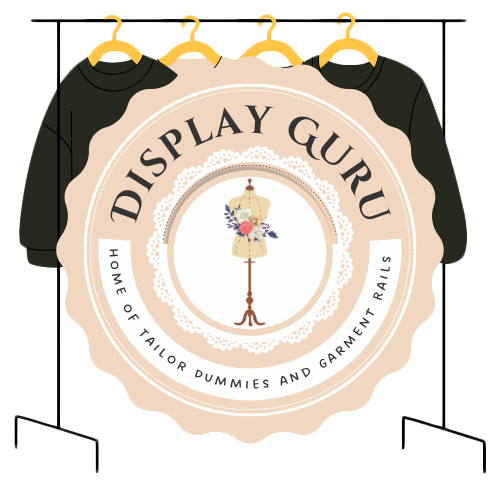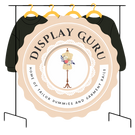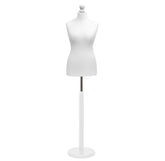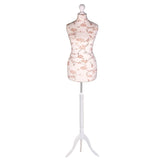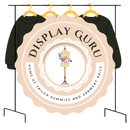Mannequin Adjustable Sewing for Perfect Garment Fits
If you're serious about creating garments that fit beautifully, an adjustable sewing mannequin isn't just a tool—it's your most trusted partner in the sewing room. It's the secret to moving beyond the limitations of flat paper patterns and achieving a truly bespoke, professional finish on everything you make.
Your Silent Partner for a Perfect Fit
Let’s be honest, we’ve all been there: twisting and turning to pin a seam on our own shoulder, or trying to mark a perfectly even hemline on ourselves. It’s nearly impossible. This is where an adjustable sewing form becomes an absolute game-changer. Think of it as your patient, perfectly-proportioned stand-in, ready for you to drape, pin, and tailor your designs to perfection.
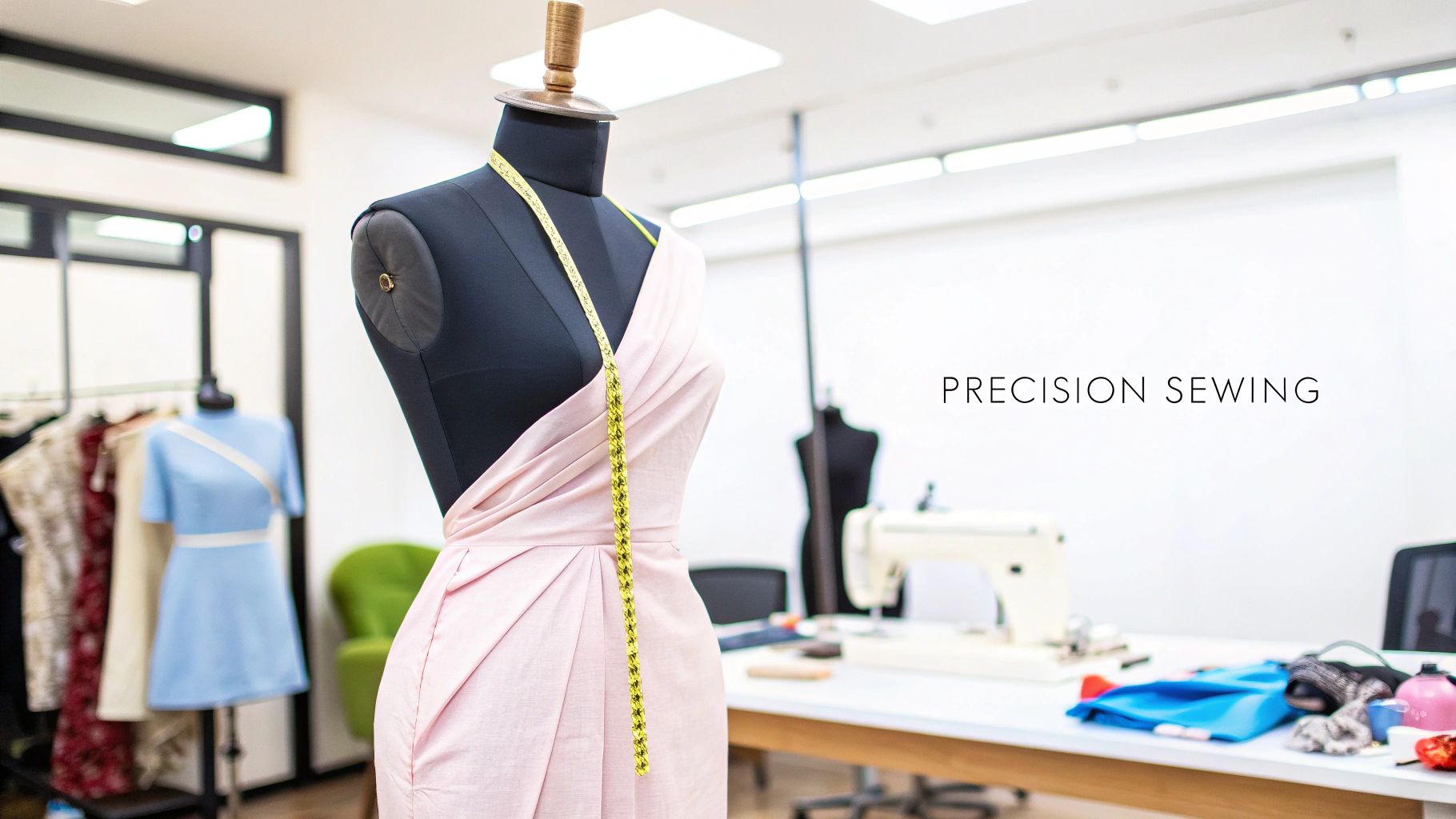
Unlike the static mannequins you see in shop windows, which are designed purely for display, an adjustable dress form is a highly functional piece of equipment made for the creator. Over the years, it has evolved from a simple display stand into a sophisticated body double that can be dialled in to mirror an incredible range of shapes and sizes. This guide will take you beyond the basic instruction manual and show you how to truly master this indispensable tool.
Why Every Sewer Needs an Adjustable Mannequin
The real magic of an adjustable mannequin is its ability to mimic a real human body with incredible accuracy. It lets you see precisely how a fabric will drape and how a garment will actually fit on a three-dimensional form—something a flat pattern simply cannot do. For hobbyists and seasoned professionals alike, this unlocks some significant advantages:
- Achieve a Flawless Fit: You can adjust the bust, waist, and hips to precisely match your own measurements (or a client's), taking all the guesswork out of fitting.
- Simplify Complex Alterations: Finally, you can tackle tricky fitting problems like gaping necklines or twisted seams with confidence because you can see the issue right there in front of you.
- Unlock Creative Draping: Experiment by designing directly on the form. Play with how the fabric falls and create completely original patterns, free from the constraints of paper.
- Save Time and Frustration: Say goodbye to that endless cycle of sewing, trying on, ripping seams, and starting over. Now you can pin and adjust on the form until it’s just right.
This need for precision tools is clearly reflected in the UK’s booming garment and tailoring industries. The UK sewing machine market alone was valued at USD 116.7 million in 2024, which points to a strong and continuous demand from sewists for tools that ensure accuracy. An adjustable mannequin is a direct response to this need, allowing for the exact replication of measurements so critical to high-quality garment construction. If you're interested in the business side, you can find more insights about bespoke fashion production and its market trends.
By acting as a stand-in for the body, an adjustable sewing mannequin bridges the gap between a two-dimensional pattern and a three-dimensional garment. It is the single most effective tool for visualising and executing a perfect fit.
Consider this guide your complete roadmap to getting the most out of your dress form. We'll walk you through everything from selecting the right model to using it for advanced couture techniques, helping you bring your creative visions to life with professional-level precision.
Getting to Know Your Adjustable Mannequin
To really get the most out of your mannequin adjustable sewing form, you need to understand what makes it tick. It’s less of a static dummy and more of a customisable sculpture. Every part is engineered to work together, letting you transform a standard shape into a precise body double for spot-on fittings.
When you break it down, it's a clever piece of kit. The main parts you'll be working with are the adjustment dials, the central pole and base, the outer covering, and often, a handy hem marker. Understanding how these bits function in harmony is the first step to achieving that flawless fit you're after.

The Core Components and What They Do
The real magic of an adjustable dress form lies in its dials and the clever mechanisms inside. These are the controls that expand and contract the mannequin's torso, letting you dial in specific body measurements with precision.
-
Adjustment Dials: You'll find these on the front, back, and sides, and they're what you'll use to tweak the key measurements. Most forms have between 8 to 12 dials, allowing you to independently adjust the bust, waist, and hips. Think of it like tuning an instrument; small, even adjustments across all the dials are what create a balanced and symmetrical shape.
-
Height Adjustment Pole: The central pole does more than just hold the mannequin upright; it allows you to set the torso to the correct height. This is crucial for matching the back-waist length and making sure your garments hang properly from shoulder to hem. A solid base, whether it's a tripod or a pedestal, gives you the stability you need when you're draping and pinning.
-
The Outer Shell: The surface of your mannequin is just as important as what's going on inside. Most adjustable forms have a thin layer of foam-backed fabric stretched over a hard plastic interior. This design is a smart compromise: the fabric gives you a pinnable surface that holds material in place, while the rigid core provides the structure.
This construction means you can pin into the form, but it’s best to do it at an angle rather than pushing straight in. This little trick stops your pins from hitting the hard plastic underneath, which can damage both the pin and the mannequin’s internal parts. For more on this, our guide on understanding mannequin measurements has some valuable tips.
Pinnable Surfaces vs. a Rigid Interior
That interplay between the soft outer layer and the hard inner shell is a key design feature. A foam-backed fabric cover is what makes a mannequin truly useful for sewing. It grips fabric so it doesn't slip while you're draping, and it lets you do the shallow pinning you need to secure seams and darts.
However, the rigid plastic interior that houses all the adjustment mechanisms isn't meant for deep pinning. This is a crucial difference compared to professional solid-foam dress forms. The trade-off is clear: you get incredible adjustability, but you sacrifice a fully pinnable surface.
Think of it this way: the dials create the general silhouette, while the pinnable cover lets you fine-tune the details. The real artistry comes when you add padding over this basic structure to mimic unique body contours.
Specialised Features to Look For
Beyond the basics, many models come with extra features that add a lot of functionality. A common and incredibly useful one is a hem marker. This is usually a clip or guide that slides up and down the central pole. It lets you mark a perfectly even hemline on a skirt or dress—a task that's notoriously tricky to do on yourself.
Some more advanced forms might also have a split waist or an extendable back, giving you even more nuanced control over torso length and shape. As you look at different models, think about which of these features will best support the kinds of garments you love to make. By knowing what each component is for, you can start to work with your mannequin with real confidence, turning it into the perfect partner for all your sewing projects.
How to Choose the Right Adjustable Sewing Mannequin
Picking the perfect adjustable sewing mannequin is the first real step towards getting that flawless fit you're after. Think of it less like buying another tool and more like finding the right partner for your sewing projects. Let’s walk through the key things to consider, so you can choose a dress form that truly works for you and helps you grow as a maker.
The first thing to get your head around is the different types of adjustable mannequins out there. Each model is built with certain sewing jobs in mind, from simple dress fittings to crafting complex garments like tailored trousers. Understanding what makes them different is key to making a smart choice that will serve you well for years to come.
Comparing Your Mannequin Options
Most adjustable forms fit into one of three main camps. They all share the same basic goal, but their features and what they can do are quite different.
-
Standard 8-Part Forms: This is the go-to choice for most home sewers and for good reason. It has eight sections you can adjust with dials—usually for the bust, waist, and hips. They’re fantastic for general dressmaking and getting the basics of a garment to fit just right.
-
Professional 12-Part Models: If you need a bit more finesse, these forms offer more control. They have extra adjustment points, often around the bust and for the back length. This extra precision is a game-changer for detailed tailoring and tricky designs where every millimetre counts.
-
Bifurcated (Legged) Mannequins: Do you love making trousers, shorts, or jumpsuits? If so, a bifurcated mannequin is an absolute must-have. The separate legs let you fit and drape lower-body garments with an accuracy that a standard torso-only form just can't match.
The growing range of these mannequins shows just how much people value them. The UK mannequin market, which includes these specialist sewing forms, was worth around USD 278.2 million in 2023. It’s expected to grow to nearly USD 649.7 million by 2030, which really highlights how essential these tools have become for both hobbyists and professionals.
Here’s a quick look at how the main types stack up against each other.
Adjustable Mannequin Feature Comparison
This table compares key features across different types of adjustable sewing mannequins to help you choose the best model for your needs.
| Feature | Basic 8-Part Mannequin | Professional 12-Part Mannequin | Bifurcated (Legged) Mannequin |
|---|---|---|---|
| Adjustment Points | 8 dials (bust, waist, hips) | 12 dials (adds back length, neck, etc.) | 12+ dials, including upper leg adjustments |
| Best For | General dressmaking, skirts, tops | Detailed tailoring, complex patterns | Trousers, shorts, jumpsuits, swimwear |
| Pinnable Surface | Yes, typically foam-backed nylon | Yes, often a higher-quality linen or canvas | Yes, covers entire torso and leg area |
| Skill Level | Beginner to Intermediate | Intermediate to Advanced | All levels sewing lower-body garments |
Choosing the right type really comes down to what you plan on making most often.
The Golden Rule of Sizing
Right, before you even start browsing, you need to grab a tape measure. Take accurate measurements of your full bust, waist, and hips. These numbers are your starting point, but here comes the single most important rule of buying a mannequin.
Always choose a mannequin size range that is slightly smaller than your own body. You can always add padding to build up a form to match your curves, but you can never make a mannequin smaller than its minimum settings.
Buying a form that's too big is a mistake many people make, and it’s a frustrating one. Starting with a smaller base gives you the freedom to pad out specific areas—a full bust, a rounded tummy, or sloped shoulders—to create a true replica of your body. This customisation is how you truly get the most out of an adjustable mannequin.
Essential Features to Look For
Beyond the size and type, a few key features separate a good mannequin from a great one. Pay close attention to how it’s built, because this will directly affect how easy it is to use every day.
A sturdy base is non-negotiable. There’s nothing worse than a wobbly form when you’re trying to pin a delicate fabric. If you want to know more about what makes a solid foundation, take a look at our guide on choosing the right dress form stand.
Next, feel the cover. You want a smooth, pinnable surface, which usually means the fabric has a thin layer of foam underneath. This lets you stick pins in at an angle to hold your fabric securely. Finally, have a look at the number of adjustment dials. As a general rule, more dials mean more control, giving you a better shot at recreating a unique body shape with real precision. Make the right choice now, and your mannequin will quickly become one of the most valuable tools in your sewing room.
A Step-by-Step Guide to Perfect Adjustments
You’ve got your new adjustable mannequin. Now it’s time to transform it from a generic shell into a precise body double. This is where the magic happens, and it's a process that blends mechanical tweaks with a bit of artistic padding to capture a truly unique shape.
Think of it like tuning a guitar. Each small turn of a dial contributes to the final, harmonious result. If you rush it or make big, jarring adjustments all at once, you can throw the whole thing off balance and even stress the internal parts. Patience is your best friend here; a little time now will create a reliable partner for all your future sewing projects.

As you can see, the journey to a perfect fit starts well before you touch a single dial. Getting your own body measurements right is the foundation for everything that follows, from choosing the right model to setting it up accurately.
Setting the Foundation and Height
First things first, let's get the base sorted. Before you even think about the dials, make sure the stand is solid and stable. A wobbly mannequin is a nightmare to work with, especially with heavier fabrics, and it will throw off your fittings.
Once you're happy it’s secure, the next critical job is setting the height. You’re aiming to match the mannequin’s back-waist length to your own. This is the measurement from that knobbly bone at the base of your neck down to your natural waistline. Loosen the collar on the central pole and slide the torso up or down until it matches perfectly. Getting this right is the key to ensuring waistlines on your garments fall exactly where they should.
Adjusting the Circumference Dials
Now for the fun part – shaping the torso. The secret here is to work slowly and evenly across all the adjustment points. Start by giving each dial for the bust, waist, and hips just a few turns to begin expanding the form outwards. Don't go all out on one measurement at a time.
For a balanced, symmetrical result, follow this simple routine:
- Work in Rounds: Adjust the front bust dials a little, then the side dials, then the back. Now, repeat that same circuit for the waist, and then again for the hips.
- Grab a Tape Measure: After each full "round" of adjustments, measure the mannequin's bust (at the fullest point), waist (at the narrowest), and hips (at the widest) to check your progress.
- Keep it Symmetrical: Whatever you do to the left side, do the exact same to the right. An uneven form is a fast track to wonky clothes.
- Stop Just Short: Here’s a pro tip. Aim to set the final measurements to be about 2-3 cm smaller than your actual body measurements. This little bit of wiggle room is essential for the next, crucial step.
Think of the dials as creating the skeleton. They build the core structure and silhouette. The final, nuanced shaping that captures your individual curves and bumps comes from padding, which will perfectly fill that small gap you've left.
The Art of Custom Padding
Let's be honest, nobody is perfectly symmetrical or shaped like a generic mannequin. This is where padding comes in to save the day, turning your standard form into a true bespoke fitting tool that mirrors your body perfectly.
To get this spot-on, you'll need a good set of your own measurements. If you're a bit rusty on the technique, our easy guide on how to take body measurements for clothes will walk you through it.
You can use a few different materials to build up your mannequin's shape:
- Polyester Batting: This is brilliant for adding general softness and volume across larger areas like the stomach, bust, or derrière.
- Foam Shoulder Pads: Perfect for building up the shoulders. Whether your own are sloped, square, or one is slightly lower than the other, these pads can replicate them.
- Shaped Foam Pads: You can also find specialist kits with pre-shaped foam pieces designed to mimic things like a full bust, a rounded tummy, or prominent shoulder blades.
Simply start pinning or taping pieces of batting or foam onto the areas that need a bit more shape. Layer them gradually, checking with your tape measure as you go, until you've matched your dimensions. A well-padded form doesn’t just match your numbers; it captures your posture and unique contours, making it an invaluable ally in your quest for the perfect fit.
Advanced Draping and Fitting Techniques
https://www.youtube.com/embed/nMlMmZBbeBs
Once you’ve dialled in your mannequin’s measurements and padded it out to match a specific body, it stops being just a simple stand-in. It becomes your silent creative partner, a powerful design tool that lets you move beyond just checking a fit to actually solving problems and designing in three dimensions.
This is where the real magic happens. We’re talking about draping, the couture art of creating a pattern by sculpting fabric directly onto the form. Instead of wrestling with flat paper, you let the fabric’s weight and behaviour guide your hand. It's a much more intuitive way to design, and it leads to a fit that flat patterns can only dream of.
The Art of Draping on Your Mannequin
Before you can start draping, you need to prep both your fabric and your form. First, find your fabric’s grainlines—the threads running parallel and perpendicular to the selvage. These are the foundation of your garment, dictating how it will hang and stretch, so getting them right is non-negotiable.
Next, it’s time to create a roadmap on your mannequin using narrow tailor’s tape. You’ll want to mark out a few key landmarks:
- The Centre Front and Centre Back: These lines are crucial for keeping your design symmetrical.
- The Bust Line: Mark the fullest point, running horizontally across the bust.
- The Waistline: This is the main anchor point for bodices, skirts, and dresses.
- The Hip Line: Find the fullest part of the hips and mark it clearly.
With your guidelines in place, you can start pinning your fabric. Smooth the material over the form, making sure your grainlines are perfectly aligned with your tape markers, and pin it down securely. From there, you can sculpt darts to create shape, pin in new seam lines, or experiment with pleats and gathers right on your mannequin adjustable sewing form. The best part is the instant feedback—you see your design come to life in real-time.
Diagnosing and Solving Fitting Issues
Your padded mannequin is also an incredible diagnostic tool. It lets you spot and solve all those frustrating fitting issues that are nearly impossible to see on your own body. Simply pop a test garment (or 'toile') onto the form and you’ll see exactly where things are going wrong.
Problem: The neckline of a blouse is gaping. Solution: On the form, you can pinch out that extra fabric right at the neckline to form a small dart. Once you see how much you need to remove, you can transfer that adjustment back to your paper pattern, eliminating the gape for good.
Problem: There are strain lines pulling across the back or bust. Solution: This is a classic sign that the garment is too tight. On the form, you can carefully slash the fabric right where it’s straining and let it open up. The gap that appears shows you precisely how much more room you need to add to your pattern pieces.
Your mannequin doesn't just show you that there's a problem; it shows you where and by how much. It transforms fitting from a frustrating guessing game into a clear, logical process of correction.
This level of precision is more important than ever. As e-commerce continues to grow, so does the demand for custom-fit clothing and accurate samples. According to the UK's Office for National Statistics, internet sales accounted for 26.6% of total retail sales in May 2022, a massive leap from 19.7% back in February 2020. This shift has encouraged manufacturers to promote adjustable mannequins to designers and tailors who need a reliable way to fit garments for clients they may never meet in person. You can see more on how market trends influence mannequin design on fortunebusinessinsights.com.
From Fabric to Paper Pattern
When you’re happy with how your design looks on the form, the final step is getting it onto paper. While the fabric is still pinned to the mannequin, carefully mark all your seam lines, dart points, and notches with a fabric marker.
Then, you can unpin the fabric, lay it flat, and ‘true up’ your lines using a ruler and a French curve to get them perfectly smooth. What you’re left with is a custom pattern born from a 3D shape, not a flat drawing. For more ideas on building your skills, have a look at our guide on sewing for beginners, which covers foundational tips to build your confidence. By mastering these techniques, your mannequin will become one of the most valuable tools in your sewing room.
Common Questions About Adjustable Mannequins
Even when you've got your mannequin set up just right, questions are bound to pop up as you sew. Getting a handle on these common queries is the key to using your form correctly, protecting your investment, and achieving a truly professional finish on all your projects.
Let's dive into some of the things people ask most often.
A lot of sewers, particularly if they're new to using a dress form, get a bit hesitant about its surface. After all, isn't pinning fabric to it the whole point?
Can I Pin Directly Into My Adjustable Mannequin?
Yes, absolutely—you just need to know the right way to do it. Most adjustable mannequins have a hard plastic core covered by a thin layer of foam-backed fabric. This construction is ideal for shallow, angled pinning, which lets you hold fabric in place for draping without any fuss.
The trick is to use sharp, fine pins and slide them in at an angle, not straight on. Think of gliding the pin along the surface of the inner plastic shell. If you try to push it straight in, you'll likely hit the hard core, which can blunt your pins or even damage the mannequin's covering over time. For any deep, structural pinning, it's always better to pin into a custom padded cover or directly into the seam allowances of the garment you're working on.
The key is to work with the mannequin's construction, not against it. Angled pinning secures fabric effectively while preserving both your pins and the foam-backed surface for years of use.
Another big question comes up right at the beginning, when you’re deciding which one to buy. It's rare that our own body measurements match a standard size chart perfectly.
My Measurements Are Between Two Sizes—Which Mannequin Should I Buy?
Always, always choose the smaller size. This is the golden rule of buying an adjustable dress form. You can easily add padding to build up a smaller form to your exact measurements, but you can never shrink a mannequin down past its minimum settings.
Going for the smaller option gives you complete freedom. You can add layers of wadding or foam pads to perfectly mimic your unique shape, whether that’s sloped shoulders, a full bust, or a sway back. A form that’s too big, even on its smallest setting, will never give you an accurate base for fitting your clothes, making it practically useless. To learn more about getting this right, you can check out our comprehensive guide to using adjustable dressmakers dummies.
How Should I Care For and Store My Mannequin?
A little bit of care goes a long way in keeping your dress form in great shape for years to come. It’s all quite simple:
- Cleaning: Give the fabric cover a regular once-over with a lint roller or a soft brush to get rid of dust and loose fibres. If you get a small mark on it, use a slightly damp cloth with a tiny bit of mild detergent, but try not to get it too wet.
- Protection: When you’re not using it, pop a purpose-made cover or even just an old cotton sheet over it. This will keep off the dust and stop sunlight from fading the fabric.
- Storage: Find a spot for it in a dry room where the temperature doesn't fluctuate too much.
- Handling: When you need to move it, always lift it by the main torso or the sturdy central pole. Never lift it by the neck or shoulder dials, as this puts a lot of strain on the internal adjustment mechanisms and can easily damage them.
At Display Guru, we provide a wide range of high-quality, adjustable mannequins and professional display tools designed to support your creative journey. Find the perfect partner for your sewing room and achieve flawless fits on every project. Explore our collection at https://www.displayguru.co.uk.
